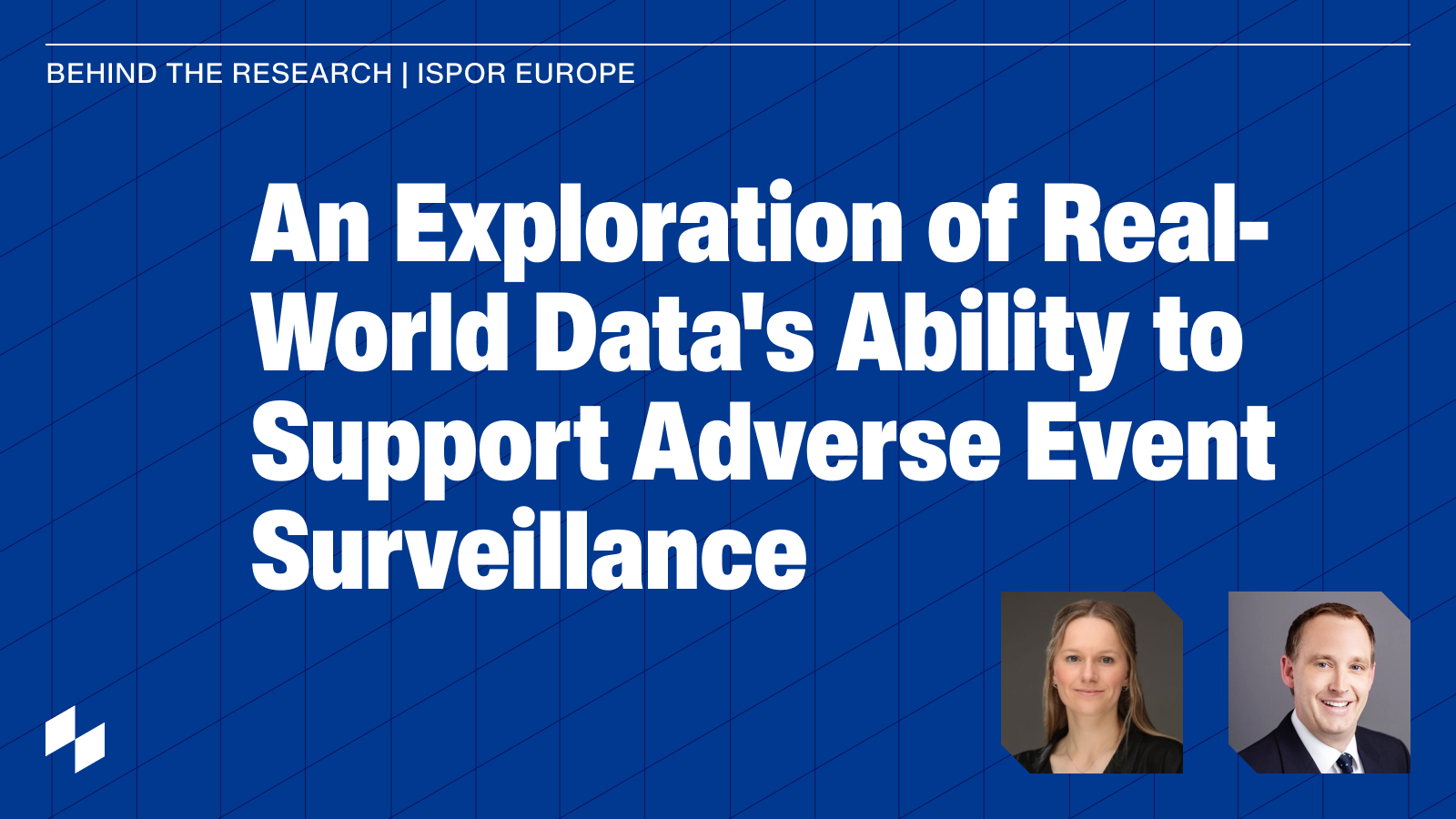ISPOR 2023 yielded many key insights for our Real-World Evidence team to carry forward into their work to reimagine the infrastructure of cancer care. We’re sharing our top four below:
#1 Assessing fitness for purpose of real-world data for regulatory and health technology assessment (HTA) submissions necessitates quality framework consensus
As the reliance on real-world data (RWD) continues to grow in regulatory and reimbursement decision-making, the need for a comprehensive, EHR-specific data quality framework becomes increasingly evident. These frameworks play a crucial role in ensuring the quality, relevance, and reliability of RWD sources and methodologies, addressing issues related to data collection, study design, and analysis.
In the session “Data quality 2.0: The Future of Real-World Evidence,” Dr. Emily Castellanos from Flatiron showcased the criteria outlined in data quality frameworks and guidances issued by the U.S. Food and Drug Association (FDA), National Institute for Health and Care Excellence (NICE), and other decision-making bodies. Using Flatiron Health's RWD, she demonstrated how researchers can assess the quality of their chosen data source.
This topic was further explored in a session led by the ISPOR Task Force on EHR data for HTA as well as in sessions that presented frameworks for evaluating the transportability and transferability of U.S. data to regions with limited local data.
Clear and comprehensive guidelines empower researchers to navigate the complexities of utilizing RWD in regulatory and HTA submissions, driving evidence-based decision-making and advancing patient outcomes.
#2 Machine learning and artificial intelligence has transformative potential in unlocking data at an unprecedented speed and scale with meaningful clinical depth
As the volume and complexity of clinical data continues to increase exponentially, traditional methods of analysis often fall short in efficiently extracting meaningful information.
ISPOR’s second plenary session “AI Wants to Chat With You: Accept or Ignore?” highlighted the potential of large language models (LLMs), an advanced AI algorithm. This technology can extract key variables from unstructured data captured in clinicians' notes within electronic health records (EHRs), saving significant time otherwise spent on manual abstraction and enabling rapid insight generation.
By harnessing the power of these technologies, researchers, healthcare professionals, and regulatory & reimbursement decision-makers can accelerate drug discovery, optimize resource allocation, and improve patient outcomes. However, to fully realize the potential of AI and maximize its benefits, it is imperative to ensure responsible and ethical use of these technologies.
#3 Studies generating real-world evidence can fill gaps in clinical trial diversity
Addressing health inequities was a key topic across a number of sessions following the FDA’s April 2022 draft guidance on diversity plans in clinical trials.
Clinical trials are crucial in the drug development process, but researchers often face challenges in recruiting diverse patient populations or face pragmatic and ethical limitations. RWE offers a promising avenue to fill these gaps by utilizing data from real-world settings and expanding to a wider study population.
This approach improves the generalizability of study findings, fostering more equitable and personalized healthcare practices. However, it remains imperative to invest in high-quality data and better methodologies, which requires commitment from the entire ecosystem.
#4 The Inflation Reduction Act has the potential to reshape the drug development industry as the US tackles affordable healthcare
As highlighted in the first plenary session “Global Focus on Affordability and Inward Investment - What Does it Mean for HEOR?”, countries outside of the U.S. have long prioritized evaluating the value of money in reimbursement decisions for new medical technologies. Conversely, the U.S. is grappling with exponentially rising healthcare costs, placing a financial burden on patients.
Enter the Inflation Reduction Act (IRA) of 2022.
This act allows the Centers for Medicare and Medicaid (CMS) to negotiate drug prices with manufacturers for a select number of high-cost drugs covered by Medicare Part D and Part B. CMS will consider various pieces of information during these negotiations, including the drug's comparative effectiveness, the availability of therapeutic alternatives, and how well the drug addresses unmet needs.
While the specific implications of the act are still unfolding, there is an opportunity for RWE to play a pivotal role as CMS looks to assess health outcomes and cost in the real-world.




